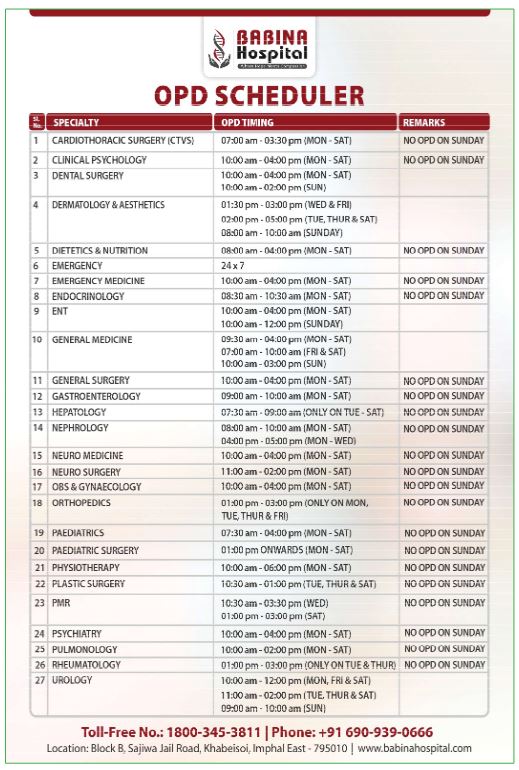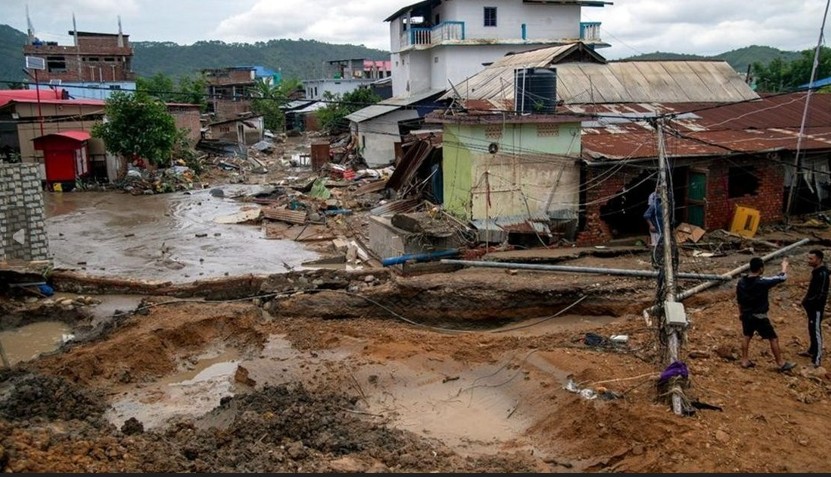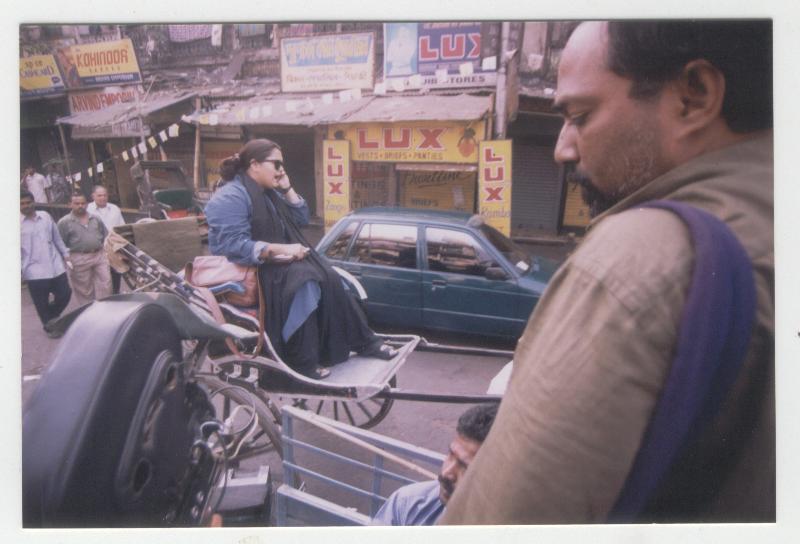Manipur has a history of floods. When we visited at the last century, the recorded flood of the 20th century was during September 30 to October 8 in 1916. The flood of 1916 affected the eastern side of the Imphal River mostly Kongba, Bamon Leikai, Wangkhei, Soibam Leikai Khurai, Porompat.
The year 1929 also has a low level flood for three days in the month of June.
The flood occurred in 1941 affected western side of the Imphal River particularly Yaiskul due to the breach of the embankment at Moirangkhom.
The flood in 1952 in the valley was moderate.
The year 1965 also experienced a moderate flood in Manipur valley.
However, the flood in 1966, Manipur Valley experienced a severe flood during June and July and once again in October of the same year. Hiyanglam, Arong, Nongmaikhong, Wangoo, Tangjeng were said to be inundated from June to October. There were breaches of embankments at 60 places.
Since then for a significant period of time, no severe flood occurred in Manipur till 1986 when there was a brief low level flood due to incessant rain and breach of in western embankment of the Imphal River at Minuthong Khuman Lampak side.
During July-August 1989, Manipur Valley experienced the worst devastating flood again. Breaches of embankments at 40 places were recorded, 361 localities were inundated, 49,069 houses were damaged, seven lakhs of people were affected, 97,500 hectares of paddy fields were damaged while 41,000 domestic animals were also affected.
In October 1992 Manipur had another flood due to the incessant rainfall in the upper catchment areas of major rivers flowing through Manipur Valley. October 14 to 16 had very high rainfall with heavy discharges in the rivers causing breaches of embankments at four places. Many areas of Imphal East and Thoubal were affected. Phumlou was also affected.
The flood in September 1997 affected many areas of Thoubal and Bishnupur districts. Breaches of embankments of Nambul River at fgour places, Wangjing River at two places, Merakhong at one place, Imphal River at two places, Thongjaorok at two places, Khujairok at one place and Khabi River at one place were recorded. Many areas of Imphal West, Bishnupur and Thoubal were affected. 4,965 houses were damaged and the magnitude of the flood was very high.
The magnitude of the flood in 1998 was low. In July, Iroishemba area was inundated. In August, sue to the breach of embankment of Wangjing River at one place, Lamding Nashikhong, Lamding Laishram Leikai and some other adjoining areas were inundated.
Due to incessant rainfall from August 24 to September 3 of 1999, there was a flood in September in Manipur Valley. Most southern parts of Manipur Valley were affected. Not less than 7, 300 houses, 15,300 hectares of paddy fields were damaged.
In September 2000, flood occurred again in Manipur. There were breaches of river embankments at 30 different places. Not less than 2,400 houses and 7,800 hectares of paddy fields were affected. Breaches of river embankments took place at 11 places of Thoubal River, six places of Wangjing River, two places of Arong River, two places of Sekmai River, three places of Manipur River. Many areas of Imphal East, Imphal West, Bishnupur and Thoubal districts were affected.
In 2001, on June 7, breach of embankment of Nambol River took place at Nambol and Kongkham thereby inundating Kongkham, Sabal Leikai, Maibam and Naorem. On July 1, Nambul River overflowed thereby inundating Uripok and Khwairamband Bazar. On July 3, Chandranadi, a tributary of Nambul overflowed on the southern side thereby inundating Chajing, Haoreibi and Karam.
In August 2002, a severe flood occurred in Manipur Valley. There were breaches of embankments of rivers at 59 places due to overflows of all the major rivers flowing in and around Imphal East, Imphal West, Thoubal and Bishnupur districts as a result of incessant rain in the catchment areas of the rivers from August 11 to 13, 2002. At least 10,000 houses and 20,000 hectares of paddy fields were damaged.
Manipur Floods of July-August 2015 are said to be worst flood in State during the last 200 years. The flood of 2015 affected entire Thoubal district and parts of Chandel district. According to the government reports, nearly 600 square kilometres of area with over 500,000 populations was affected in the Thoubal and Chandel districts. Floods and massive landslides affected 7 districts – Thoubal, Bishnupur, Imphal West, Imphal East districts that fall in the valley and Chandel, Ukhrul, Churachandpur districts that lie on the hills. Thoubal, Chandel and Churnchandpur being the worst affected of the lot. 24 people have lost their lives so far and 21 of them from Joumi village where houses sunk after a massive landslide.
In May 2016, continuous heavy rainfall in the wake of Tropical Cyclone Roanu for few days increased river levels in Manipur, causing flooding in several of the state’s 9 districts. At least 4 districts of Thoubal, Bishnupur, Imphal West and Imphal East, remained cut off from the rest of the state by flooding. Flooding in the districts of Ukhrul and Tamenglong, where torrential rains have triggered landslides, which have also made access to affected areas difficult, was also reported. At least 2 deaths – 1 in Imphal East district, another in Ukhrul district – have been reported as a result of the severe weather. Around 15 houses were destroyed after the Imphal River overflowed at Kyamgei. Sphere say that the “Imphal River bank was breached on 23 May at Kyamgei Muslim Oinam Loukon has expanded from 50 feet to 400 feet”, sweeping away many houses and inundating paddy fields. The Kongba River has overflowed, flooding parts of the town of Porompat in Imphal East district. The Nambul and Nambol rivers have also overflowed and the Thoubal River is approaching warning level.
In 2017, Manipur was hit by Cyclone “ MORA’’ accompanied by heavy rainfall and windstorms on month of May, 2017 causing floods and landslides that led to huge damage to property, infrastructures, paddy field and loss of lives. Many low-lying areas in and around Imphal, the capital of Manipur, were inundated by flood waters. Breaches of embankment in many places along river bank were reported. Peoples were left homeless with no adequate foods and drinking water. The road network was cut off at many places due to landslides. Four districts – Imphal West, Imphal East, Thoubal and Bishnupur were the most affected districts. As per the estimates reported by Manipur State Department of Relief and Disaster Management, approximately 3,000 families, 27,000 livestock were affected.
The flood in June 2018 was also severe. Eleven districts of Imphal East, Imphal West, Thoubal, Bishnupur, Kakching, Kamjong, Jiribam, Churachandpur, Pherzwal, Ukhrul, and Kangpokpi were affected. At least 22,624 houses were damaged and 1,80,000 people were affected. 15,500 hectares of crops were damaged, impacting the local economy.
In 2019 heavy rain that began around October 25 has caused flooding and landslides in Manipur cutting NH-2 in Kangpokpi besides submerging several houses in Jiribam on October 27. Many places of Imphal Valley were affected due to heavy raining and overflowing rivers. The heavy downpour triggered flood in Jiribam, Manipur’s district at the border with Assam where many houses at Khoisutok and Leingangpokpi areas were affected by the flood water, according to sources. With the river level rising, many low lying areas of the district have been inundated.
In 2024, Manipur had been severely impacted by multiple floods caused by Cyclone Remal and heavy rainfall since May 25. Major valley districts, including Imphal East, Imphal West, Thoubal, Bishnupur, and Kakching, have all been affected. As of May 31, 2024, it was reported that a total of 188,143 people had been affected, with at least 24,265 houses damaged, 18,103 people evacuated, and 56 relief camps established due to the floods.
Less than a month later, another severe flood occurred as incessant rain caused the overflow of major rivers like Thoubal and Iril. By the first week of Ausgust 2024, another wave of floods hit Churachandpur and Bishnupur districts, rendering internally displaced people – those displaced due to the violent conflict that erupted on May 3, 2023 in the state – homeless once again. A few weeks later, another round of floods hit Thoubal and Kakching districts. In Thoubal District alone, more than 1,000 flood-affected individuals were sheltered in 11 relief camps.
The fury flood comes again this year 2025 too. The pre-monsoon rain started from May 29 caused the 2025 floods with heavy rainfall in the catchment areas of the Imphal River and Leimakhong River. The flood that started from May 31 caused significant damage. The agricultural sector also suffered, with 115.59 hectares of crop land destroyed. Relief and rescue operations were ongoing, with 4,097 individuals evacuated and housed in 78 relief camps. A 57-year-old man was tragically killed in Imphal West district. As per the latest figures, at least 1,65,936 people have been impacted by flash floods resulting from embankment breaches and the swelling of the Imphal, Kongba and Iril rivers. A total of 35,384 houses have also been damaged till June 5.
The flood fury continues in Manipur. But the pertinent question is – Why the Government still fails to learn from the past floods to manage and control?
There is no denying the fact that Manipur valley was once full of water and Meitei civilisation developed by draining out the water, constructing pallis (dike) regulating waters, starting wet cultivation producing rice, fishing for foods adapting to the changing environment.
From the history of floods in Manipur from the last century till date, recurrence of floods becomes severe and it becomes very frequent in the last decade. What we can see from the history is that there is a significant difference in the occurrence of floods before and after Manipur became under British rule. There came changes of water management and maintenance of rivers and lakes as British colonial rule set in despite there was a king. After the Merger of Manipur to Dominion India in 1949, another new rules and regulations followed the new political dispensation leaving all the centuries-old practices preserving, protecting and conserving the forests and mountains in the catchment areas of the rivers, springs, streams, fountains and falls.
Many experts would say Manipur’s recurring floods are a complex issue rooted in both natural factors and human activities. Heavy rainfall, particularly during the monsoon season, combined with the state’s geographical features and inadequate infrastructure, contribute to flooding. Deforestation, riverbank encroachment, and poor water management practices further exacerbate the problem. Experts will add that we cannot escape from climate change, so we are facing floods too.
Should we remain complacent with floods we are facing now frequently blaming on climate change?
The recurring floods in Manipur highlight the need for a holistic approach to disaster management, encompassing preventative measures, robust infrastructure, and community engagement, rather than solely reactive responses. The government must shift its focus from short-term relief to long-term resilience by implementing comprehensive flood and landslide mitigation strategies.
Manipur has its history of changing the courses of its main rivers including Barak and Imphal. Why was Waishel Maril dug? Why Takhen Khong was dug? Why was Turen Ahanbi dug? Why was Merakhong dug? These are few examples. These suggest the necessity of changing the present courses of major rivers or linking as the context demands. For example, from the present flood scenario, when Imphal River overflows and many places were inundated Waithoupat and its surrounding areas has less water volume. If water from Imphal River can be channelled to Waithoupat, the overflow of Imphal River will decrease and its tributaries Kongba and Iril as well.
The Manipur government can learn valuable lessons from ancient history and Meitei scriptures to manage floods, particularly focusing on river stewardship. The ancient scripture Tutenglon recounts the heroic efforts of princes Yoimongba and Taothingmang who dredged Iril and Imphal rivers to prevent flooding, highlighting the importance of maintaining river channels. This suggests that the government should prioritize riverbed maintenance and dredging to improve drainage and reduce flood risks. For water management and regulations of flood in Manipur the Government should learn from Manipur’s ancient knowledge and practices adapting the changing environment.












